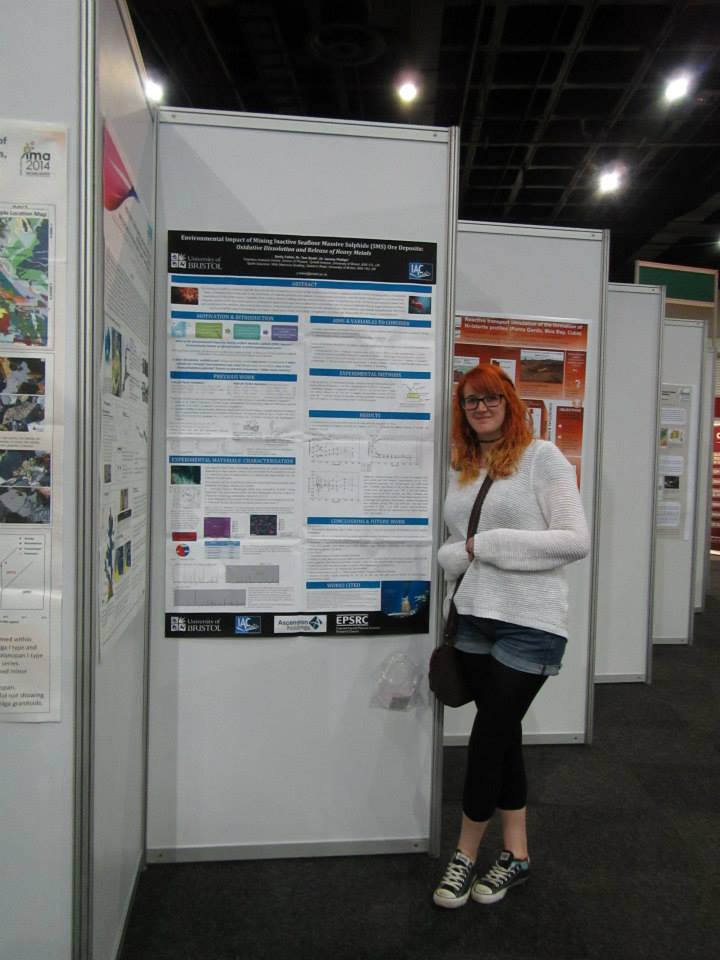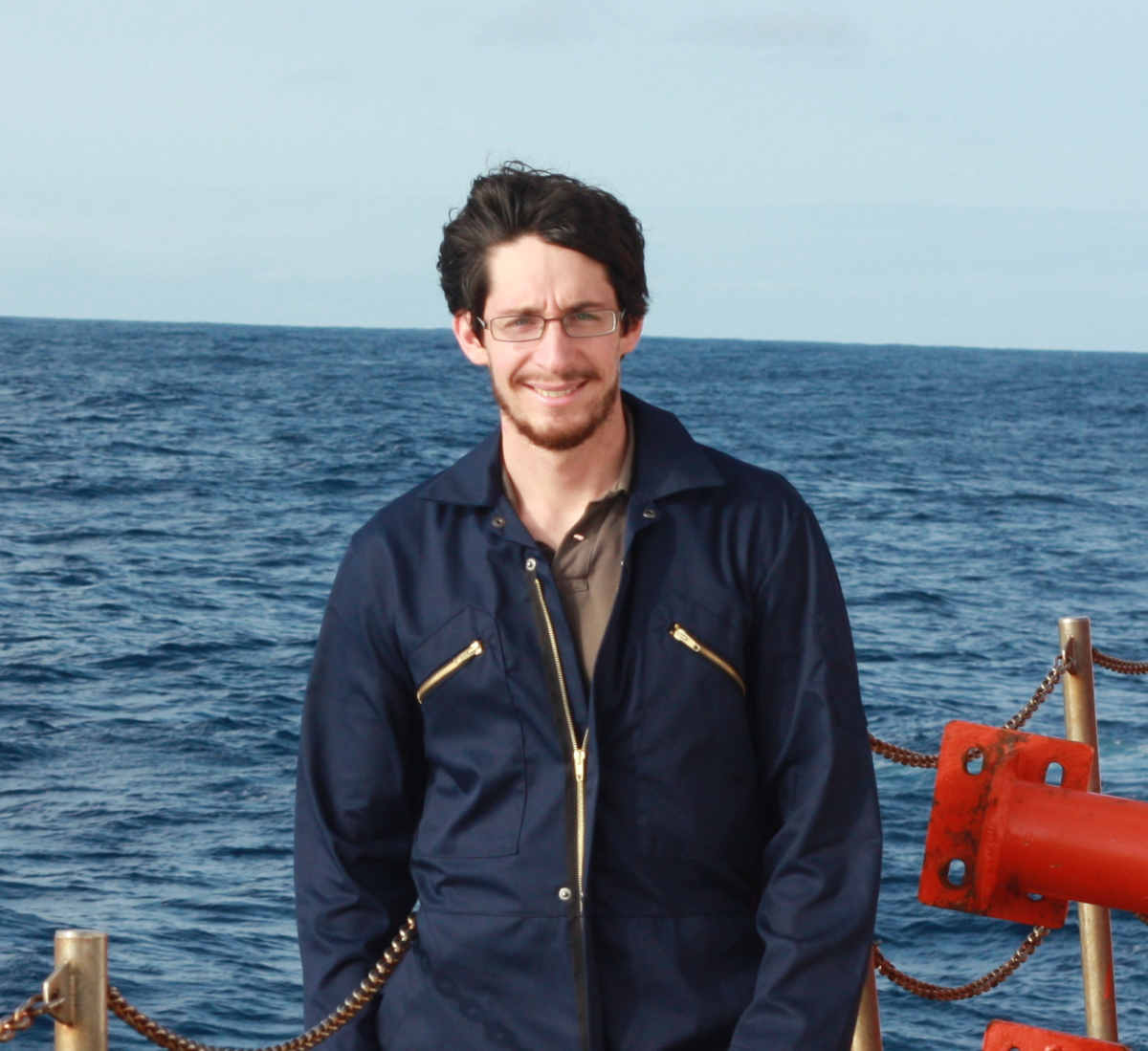The InterRidge Student and Postdoctoral Fellowship Programme continues to play an important role in the careers of early career ocean scientists. There was a high number of proposals submitted again this year and we awarded three InterRidge-funded Fellowships, together with one Fellowship for students from developing countries, supported by the ISA Endowment Fund.
The recipients of this year's InterRidge Fellowships are:
Emily Fallon, Sun Jin, Michele Paulatto, Matthew Hodgkinson
----------------------------------------------------------------------------------------------------
Emily Fallon

Emily Fallon is currently a first year PhD student at University of Bristol, UK. I am supervised by Dr. Tom Scott, Dr. Jeremy Phillips and Dr. Richard Brooker from the University of Bristol. My PhD research focuses on seafloor massive sulphide (SMS) ore deposits and the economic and environmental feasibility of mining such deposits. The continuing global demand for metals has given mining companies cause to consider the deep ocean as a source of mineral wealth. In order to support this future economic prospect, our knowledge and understanding of such deposits requires significant improvement with an associated need for study of the environmental impact that any future endeavours may have.
Matt’s proposal states that ‘The discovery of seafloor hydrothermal systems in 1979 fundamentally changed our understanding of crust – seawater interaction, ocean chemistry and the evolution of chemosynthetic life. The Von Damm Vent Field, located on the Mid-Cayman Spreading Centre, represents a highly unusual system consisting of the magnesium silicate mineral talc. It is situated on the flanks of a mid-ocean ridge, on an oceanic core complex. These large, low-angle detachment faults are widespread at ridges with slow-medium spreading rates, yet are poorly explored in the resolution required for hydrothermal vent field discovery and could play a role in cooling the oceanic crust and global geochemical cycles’.
He says, “For my PhD I am currently studying the recently discovered Von Damm Vent Field situated in the Mid-Cayman Rise. The aim of my research includes expanding our knowledge of how detachment faulting enhances hydrothermal circulation at slow-spreading ridges, and the influence of oceanic core complexes and lower crustal lithologies on vent field geochemistry. This fellowship will give me the opportunity to work with, and analyse, samples from other parts of the Mid-Atlantic Ridge that are archived in the WHOI sample collection and discover the extent to which the processes that form the Von Damm Vent Field occur elsewhere.’
------------------------------------------------------------------------------------------------------
Michele Paulatto

I am Post-Doc at Geoscience Azur, University of Nice Sophia Antipolis sponsored by the AXA research fund. I am marine geophysicist and I focus on the study of tectonic and volcanic processes at active plate margins. During my PhD at the University of Southampton I worked on seismic tomography and thermal modelling to constrain the magma storage region and magmatic flux at Montserrat, on the Lesser Antilles arc. More recently at the University of Oxford I have investigated the effect of seamount subduction on the seismicity and structure of the Tonga-Kermadec subduction zone. Currently I am working on joint active-source and local earthquake tomography to image the crust, slab and upper mantle in the central Lesser Antilles, with the aim of constraining the geometry and physical properties of the megathrust fault and the overlying forearc crust.
This InteRidge fellowship will give me the opportunity to learn new techniques and expand my knowledge on mid-ocean ridge processes. In 2013 I joined a scientific expedition to the Rainbow hydrothermal field, on the mid-Atlantic ridge. The cruise had the aim of collecting seismic, multi-beam bathymetry and potential field data over the Rainbow massif and the surrounding ocean floor. Rainbow is a high-temperature hydrothermal system hosted on ultramafic rocks on a non-transform offset of the ridge. The high-temperature suggests the presence of a magmatic heat source, but the location of Rainbow at a ridge offset and the tectonized seabed morphology suggest that the region should be magma-starved. On the cruise I was responsible for the multi-beam and potential field data, which I processed and merged with existing datasets. I will study the potential field and multibeam bathymetry data to determine the relative contributions of tectonic and magmatic accretion along the ridge and reconstruct the long term evolution of the Rainbow non-transform offset. I will visit the Woods Hole Oceanographic Institution where I will work with J. P. Canales, M. Tivey and M Behn.
--------------------------------------------------------------------------------------------------------
Jin Sun
Jin Sun got his PhD in 2013 at Department of Biology Hong Kong Baptist University, and is currently working as a research associate under the supervision of Dr Jian-Wen Qiu. During his PhD study, he mainly study on the adaptation and evolution of the notorious invasive apple snail using next-generation sequencing (NGS) and proteomics approaches. After graduation, he was fascinated by the deep-sea samples collected by manned submersible Jiaolong and decided to move into this new field. His current project is regarding the physiological adaptation and population connectivity of deep-sea mussels Bathymodiolus platifrons using functional genomics and proteomics approaches. His proposal is “Genetic connectivity of deep-sea mussels in Western Pacific examined by population genomic approach”. “Studying genetic connectivity can reveal the genetic diversity of populations and provide information for the designation of marine protected areas.” In the proposal, he said “This is a rare opportunity for me to study deep-sea mussels collected from different regions of the Western Pacific. Without this regional collaboration, it would be impossible to conduct a genetic connectivity study on deep-sea mussels. What’s more, the fellowship will allow me to establish connection with experts in this field of study. The experience gained from this fellowship program will allow me to start a career in the exciting area of deep-sea research, and contribute to the conservation of deep-sea biodiversity. ” In June and July 2013, his research group took part in the manned submersible Jiaolong’s first scientific cruise, during which samples of B. platifrons were collected in South China Sea. He will travel to JAMSTEC to study several other B. platifrons populations in collaboration with Prof. Ken Takai and Dr. Hiromi Watanabe in the next two years.




